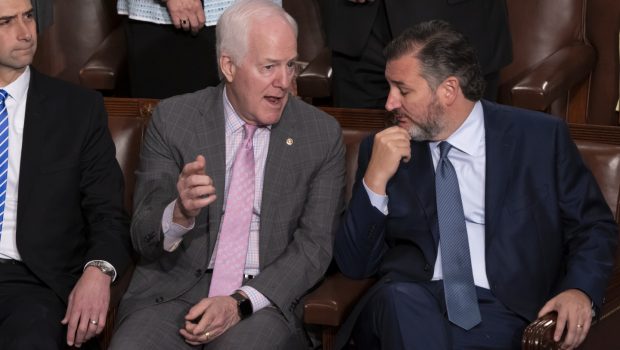Successful Deployment of Hydrogen Technology Will Require Clear Regulations and an Efficient Permitting Process
The success or failure of exciting new investments in hydrogen – made possible by the recently-enacted Infrastructure Investment and Jobs Act (IIJA) – will be decided not by the availability of funds but the regulatory and permitting regime in place for new projects.
The IIJA requires the Department of Energy (DOE) to establish at least four regional Clean Hydrogen Hubs. There is plenty of cash at the Department to make this happen, given the $8 billion appropriated by IIJA.
This is a lot of money. And in the nearly eight months since the IIJA was signed into law by President Biden, hydrogen proponents have been understandably excited about moving ahead. The opportunity to decarbonize multiple sectors of the economy, while putting people to work in new fields, is unprecedented in its size and scope.
The ink was barely dry on the bill before business and political leaders started taking inventory of their capabilities, mobilizing leaders from industry and academia to conceptualize a competitive hydrogen hub.
In preparation for awards, DOE issued a Request for Information, where industry, states, and other stakeholders provided input into the process, and DOE recently took a significant next step by issuing a Notice of Intent. We expect a preliminary round of funding which will help some of the more compelling regions further develop their plans.
All this is encouraging, to be sure, but details matter. Ensuring success at each and every one of the Clean Hydrogen Hubs will require a workable regulatory and permitting regime. A failure to update related policies threatens to delay or – at worst – completely derails efforts to decarbonize our economy by transitioning to hydrogen.
Right now, at least 15 different regulatory agencies oversee hydrogen infrastructure, explicitly or more often than not, implicitly. For example, one of the biggest head-scratchers for those considering investment in hydrogen pipelines is which agency is in charge when they cross state lines: FERC or PHMSA? Many industry experts have sided with FERC as they already have jurisdiction over natural gas pipelines, but existing statutes leave room for interpretation and are not particularly well-designed to facilitate the commercialization of hydrogen.
What’s more, the federal government's most recent Unified Regulatory Agenda, which provides an outline for how agencies are revising their regulations, has been silent on streamlining or clarifying such rules, roles, and responsibilities.
A growing number of voices are calling on the Administration to provide clarity and, where necessary, issue new regulations to facilitate permitting. In fact, legislation by Senators John Cornyn (R-TX) and Chris Coons (D-DE), as well as Congresswoman Debbie Lesko (R-AZ), recognize the uncertainty that currently exists.
We also know that DOE has led interagency discussions with other agencies, but leadership on this has to come from the top. The White House should direct all federal agencies to identify gaps in their regulations associated with establishment of the hydrogen hubs funded under the IIJA and the investments that will naturally follow.
The President should also establish a formal interagency council to coordinate permitting of clean energy infrastructure funded under the IIJA. The council should meet regularly to discuss major infrastructure projects to ensure agencies are coordinated and expeditiously resolving impediments.
If President Biden acts on this, it would be an extension of a recent announcement where the administration boosted the number of agency professionals processing renewable energy environmental reviews and permit applications, coordinated by five field offices in Washington, Arizona, California, Nevada, and Utah.
Finally, while the administration is thinking of ways to more effectively streamline the deployment of clean energy technologies, now would be a good time for DOE to finally stand up the Fuels of the Future Advisory Board – a proposed replacement to the scuttled Hydrogen and Fuel Cell Technical Advisory Committee.
This will provide stakeholders with a voice in the deployment of technology and provide another level of oversight that is needed when this much money is at stake.
The risks of getting this wrong are high, not only for the future of hydrogen, but for other government-assisted investments. If we take too long to make investments, and are bogged down by bureaucratic red tape, billions of dollars could be reprogrammed by a future Congress or administration and put at risk future government-supported demonstration projects.
There are reasons to be optimistic that the United States can still achieve big things; financing at least four major hydrogen hubs with $8 billion in funding would be a huge accomplishment. But Congress also needs to clarify federal regulatory responsibility to enable a clean hydrogen economy – and we need government leaders to rise to the occasion, and act with the urgency that these issues deserve.
Bud DeFlaviis is a lobbyist focused on energy issues and hydrogen technology at Lot Sixteen.








Gloss